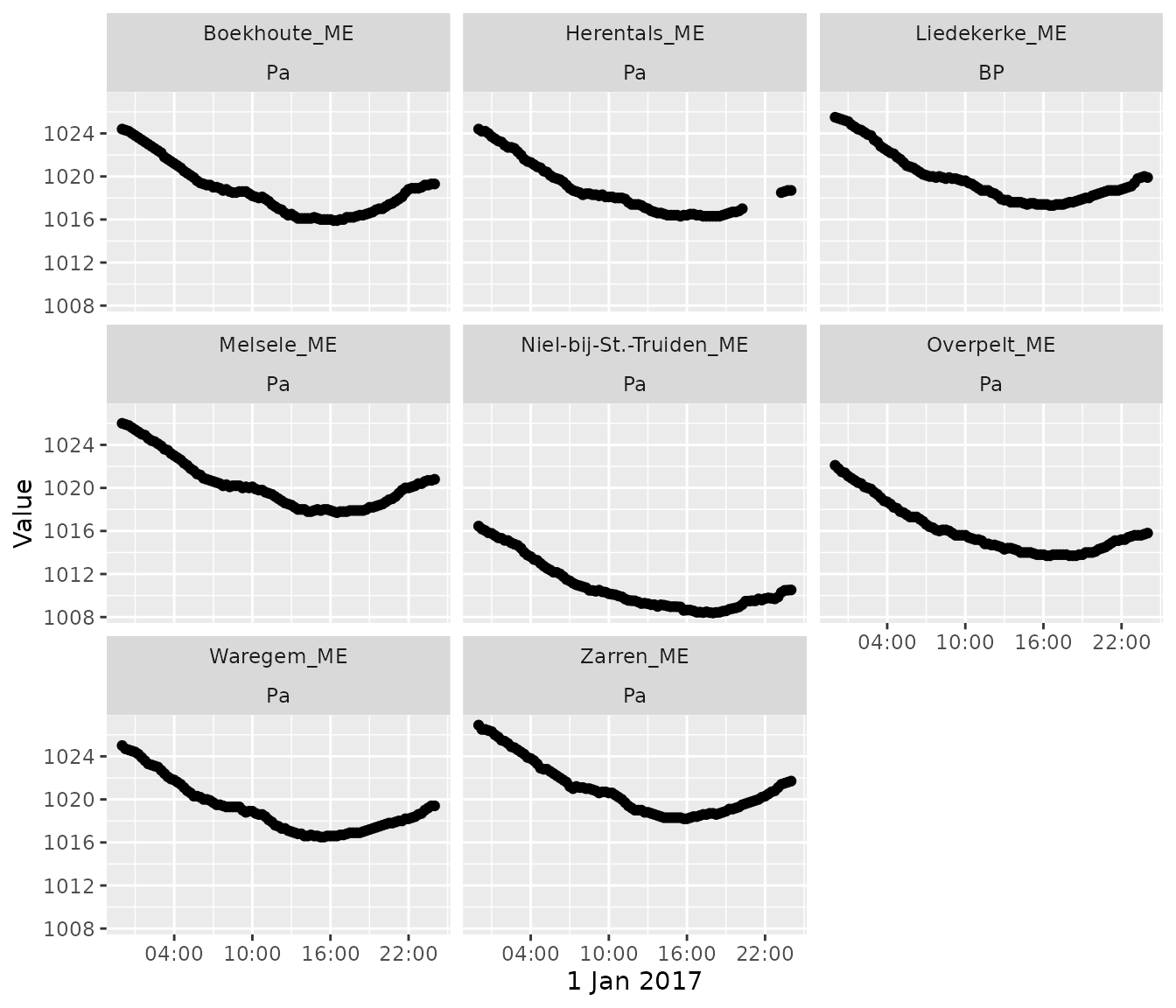
Download time series from multiple stations/variables
Stijn Van Hoey
2025-12-16
Source:vignettes/download_timeseries_batch.Rmd
download_timeseries_batch.RmdIntroduction
In many studies, the interest of the user is to download a batch of time series following on a selection criterion. Examples are:
- downloading air pressure data for the last day for all available measurement stations.
- downloading all measured variables at a frequency of 15 minutes for a given measurement station.
In this vignette, this type of batch downloads is explained, using
the available functions of the wateRinfo package in
combination with already existing tidyverse functionalities.
Download all stations for a given variable
Consider the scenario: “downloading air pressure data for the last
day for all available measurement stations”. We can achieve this by
downloading all the stations information providing air_pressure data
(get_stations()) and for each of the ts_id
values in the resulting data.frame, applying the
get_timeseries_tsid() function:
# extract the available stations for a predefined variable
variable_of_interest <- "air_pressure"
stations <- get_stations(variable_of_interest)
# Download the data for a given period for each of the stations
air_pressure <- stations %>%
group_by(ts_id) %>%
do(get_timeseries_tsid(.$ts_id, period = "P1D", to = "2017-01-02")) %>%
ungroup() %>%
left_join(stations, by = "ts_id")As this results in a tidy data set, we can use the power of ggplot to plot the data of the individual measurement stations:
# create a plot of the individual datasets
air_pressure %>%
ggplot(aes(x = Timestamp, y = Value)) +
geom_point() + xlab("1 Jan 2017") +
facet_wrap(c("station_name", "stationparameter_name")) +
scale_x_datetime(date_labels = "%H:%M",
date_breaks = "6 hours")
Download set of variables from a station
Consider the scenario: “downloading all soil_moisture (in dutch:
‘bodemvocht’) variables at a frequency of 15 minutes for the measurement
station Liedekerke”. We can achieve this by downloading all the
variables information of the Liedekerke
station(get_variables()) using the station code of the
waterinfo.be interface (ME07_006), filtering on the
P.15 time series and for each of the ts_id
values, applying the get_timeseries_tsid() function:
liedekerke_stat <- "ME07_006"
variables <- get_variables(liedekerke_stat)
variables_to_download <- variables %>%
filter(parametertype_name == "Bodemvocht") %>%
filter(ts_name == "P.15")
liedekerke <- variables_to_download %>%
group_by(ts_id) %>%
do(get_timeseries_tsid(.$ts_id, period = "P1M", from = "2017-01-01")) %>%
ungroup() %>%
left_join(variables, by = "ts_id")As this results in a tidy data set, we can use the power of ggplot to plot the data of the individual measurement stations:
liedekerke %>%
ggplot(aes(x = Timestamp, y = Value)) +
geom_line() + xlab("") + ylab("bodemvocht") +
facet_wrap(c("ts_name", "stationparameter_name"), scales = "free") +
scale_x_datetime(date_labels = "%d-%m\n%Y",
date_breaks = "10 days") 